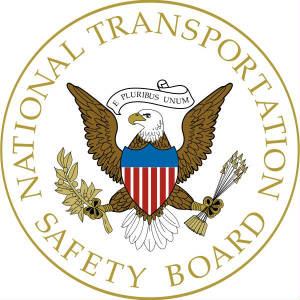 Investigators think that ice may have contributed to the crash of a small turboprop plane in Montana on Sunday, which they originally speculated may have been overloaded.
Investigators think that ice may have contributed to the crash of a small turboprop plane in Montana on Sunday, which they originally speculated may have been overloaded.
The plane, which was carrying three families from Oroville, California to a ski holiday in Bozeman, Montana, crashed Sunday in a cemetery near Butte and all on board were killed.
Though the National Transportation Safety Board (NTSB) is a long way from knowing the exact reason the Pilatus PC-12 came down, some experts have said that atmospheric conditions in the area were similar to conditions in Buffalo on February 12 that led to the crash of a commuter plane there.
The way the plane started to spin out of control then suddenly dove into the ground bore similarities to not only the Buffalo crash, but also the 2005 crash of a Pilatus near Bellefonte, Pennsylvania which killed five people.
In both cases a low-altitude weather condition known as “super-cooled drops” could have resulted in ice buildup on the wings. Ice can affect the aerodynamics of a plane and make it very difficult for a pilot to control the craft.
Turboprop planes are less able to withstand this type of ice than jets, which can divert heat from their engines to melt it off. Turboprops use pneumatic deicing “boots,” which aren’t quite as effective.
However, overloading is still being examined as a possible cause, because the plane was only licensed to carry 11 people but was flying with 14 passengers and crew.
Seven of those onboard were children, which would somewhat mitigate the weight issue. But investigators say that extra people, particularly if they are moving around the plane, can throw the plane off balance or shift its center of gravity and cause a loss of control.
 The NTSB said it may take months or even years to make a final determination of why the plane crashed. Their task is complicated by the fact that there were no flight data or voice recorders on board. Neither is required on small non-commercial aircraft.
The NTSB said it may take months or even years to make a final determination of why the plane crashed. Their task is complicated by the fact that there were no flight data or voice recorders on board. Neither is required on small non-commercial aircraft.
Wind shear is being closely examined as the possible cause of a crash of a FedEx cargo plane at Tokyo’s Narita airport Monday morning, which killed the two pilots on board.
Japanese meteorologists reportedly warned of a wind shear risk the night before the crash, when weather conditions started to deteriorate. A local observatory also said it had notified airlines of possible wind shear, though it is unknown if the FedEx pilots were warned of the risk.
Wind shear is a condition in which wind speed and direction can suddenly and unpredictably change. It can be extremely dangerous for planes that are taking and off and landing, as it can destabilize the plane and cause it to lurch violently out of control.
Airport video of the landing showed the plane bouncing and losing control just as it touched down. This resulted in a chain reaction crash where the plane tipped on its side, cartwheeled down the runway, then burst into flames and broke apart.
The plane was a Boeing MD-11 which was en route from Guangzhou, China to Japan. Experts say that the MD-11, which is no longer manufactured, has very sensitive controls which can lead to the pilot overcompensating during a problem landing.
MD-11s have been involved in two similar crashes over the years. In 1997 another FedEx plane flipped, crashed and caught fire after a rough landing at Newark airport, and in 1999 an MD-11 carrying passengers tipped over and caught fire in Hong Kong while attempting to land during a storm.
By Karen Elowitt for PeterGreenberg.com.
Related links: ABC News, Associated Press, Aviation Week, Reuters, Al-Jazeera
Related articles on PeterGreenberg.com:












